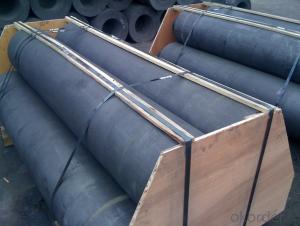When we talk about graphite electrodes, we’re diving into a world of industrial applications and manufacturing processes that are as fascinating as they are complex. These cylindrical wonders are crucial for the production of various metals, particularly in the steel industry, where they play a pivotal role in electric arc furnaces. But how are they made? That’s what we’re here to explore, in a way that’s a bit less textbook and a bit more storytelling.
Let’s start with the raw material itself – graphite. It’s not just any pencil lead; it’s a form of carbon that’s been treated to be incredibly resistant to heat and electrically conductive. This natural resource is the foundation of our story. The journey of graphite begins in the mines, where it’s extracted and then goes through a series of purification processes to ensure its quality. It’s a bit like a diamond in the rough, waiting to be refined and reveal its true potential.
Once purified, the graphite is mixed with a variety of other materials, forming a sort of ‘secret sauce’ that gives the electrodes their unique properties. This concoction includes binders that help hold everything together, and various additives that enhance the performance of the electrodes under the intense conditions they’ll face. It’s like making a cake, but instead of flour and sugar, we’re dealing with chemicals and compounds that have to be just right to achieve the desired outcome.
The next step is molding, where the mixture is pressed into shape. This is no ordinary molding process; it’s a high-pressure affair that ensures the graphite and its binding partners are compacted tightly together, creating a structure that’s both strong and dense. Imagine the pressure of a thousand elephants standing on your shoulders – that’s the kind of force we’re talking about here.
After molding, the green electrodes, as they’re called at this stage, are baked. This is a multi-stage process that involves heating the electrodes to extreme temperatures, gradually increasing the heat to allow the binders to burn off and the graphite to become even more crystalline. It’s like watching a caterpillar transform into a butterfly, but in this case, our butterfly is a super-strong, heat-resistant graphite electrode.
The baking process is followed by a series of inspections and quality checks. These electrodes are going to be under a lot of stress, so it’s crucial that they meet the highest standards of durability and performance. Picture a team of quality control superheroes, each with their own special power to detect even the slightest imperfections.
Once they pass the tests, the electrodes are machined to their final dimensions. This is a precise process that requires a steady hand and a keen eye for detail. It’s like a sculptor chiseling away at a block of marble, except the stakes are much higher – we’re not just creating art here, we’re creating something that will withstand the heat of a furnace and conduct electricity like a champ.
And there you have it – a graphite electrode, ready for action. But the journey doesn’t end there. These electrodes have a life cycle, and as they’re used in furnaces, they gradually wear down. They’re not disposable, though; they can be repurposed and recycled, which is a testament to the sustainability of the process. It’s like giving an old car a new engine – it’s still the same car, but with a fresh lease on life.
The production of graphite electrodes is a testament to human ingenuity and the drive to create materials that can withstand the most demanding of environments. It’s a process that’s as much about precision and quality as it is about innovation and sustainability. So next time you see a steel beam or a metal structure, remember the humble graphite electrode – the unsung hero behind the scenes.

